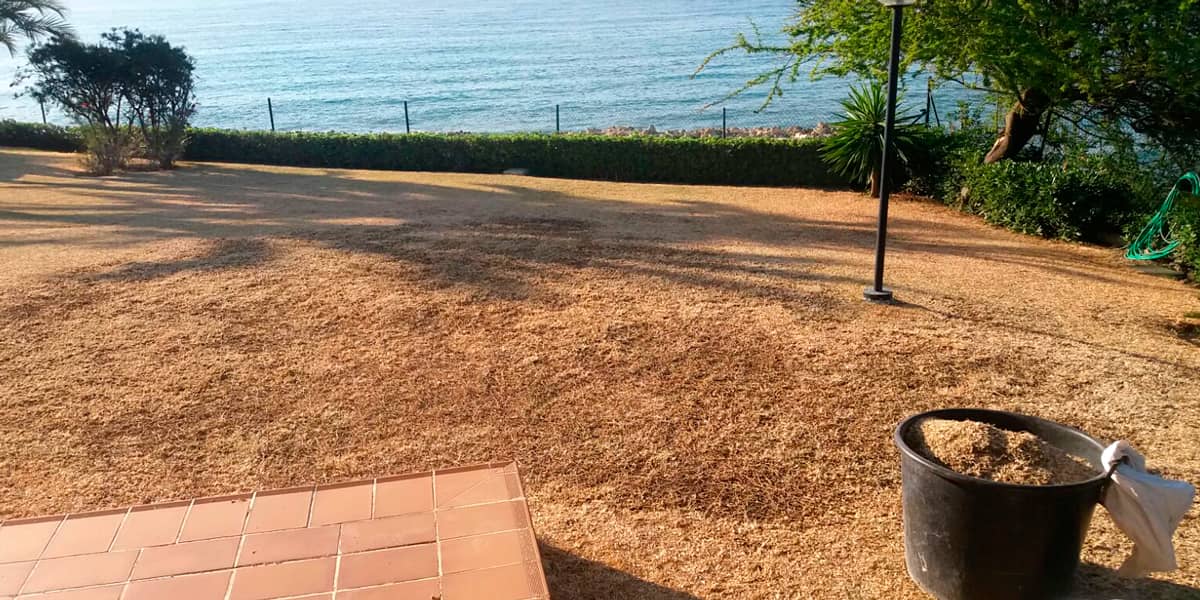Material Selection And Compaction For The Base Of Your Artificial Turf
Follow these tips to choose and compact the materials for the base of your artificial grass installation:
Surface with good drainage:
When a surface has good drainage, a base of 2 inches of compacted material is necessary but it could also be up to 3 inches, depending on the surface.
- Materials should be added carefully, from the innermost area of the installation to the outside.
- Use a large rake to move the materials back and forth.
- Do not walk over the materials that are uncompressed until you move forward with the compacted area.
These are some of the materials recommended for the artificial grass base:
- Bases for roads: 3/8 to 3/4 inch gravel with small particles. Make a base with a minimum of 3 inches for good compaction.
- Decomposed granite with particles of 1/4 inches approximately. A base of 2 to 3 inches is required for a good compaction.
- Any type or mix of compactable gravel will work, but we recommend checking other options with the suppliers in your area.
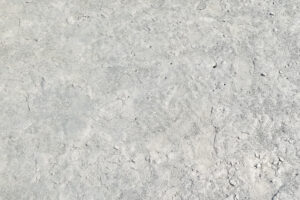
Base of roads.
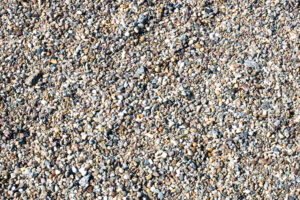
Descomposed granite.
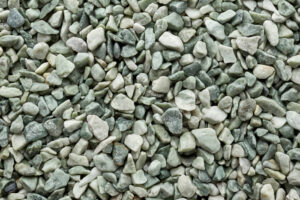
Mixed of campactable gravel.
Note: Some surfaces with low-quality drainage may require more excavation than usual, plus the use of draining stones and layered compacted materials in order to achieve adequate filtration of water.
Base on a clay surface:
In this case, it’s necessary to excavate at least 4 inches in order to get a good base; sometimes 7 inches is required.
In natural surfaces that have been classified to improve water filtration, such as areas with pools, fountains, etc.:
- Use a very porous weed fabric.
- Add stones that allow a good drainage above the weed fabric, filling any pot holes that remain and level out the surface. At least 2 inches are recommended. Compact the materials using a roller or manually when necessary.
- Place another layer of a very porous fabric. This step will ensure that the higher layers of added materials don’t mix with the lower layers of drainage stones over time.
- Add a minimum of 2 inches of compacted materials and compact the area to achieve the desired shape and quality.
Tips for transporting the materials:
- After installing the fabric, start carrying the materials with a forklift, placing them from the back to the front of your garden.
- Try not to walk over the material until it is compacted.
- Use a large rake, 1 meter is a good size, to spread out the materials evenly until you reach the desired depth. Use the smooth side of the rake so the materials are not separated while spreading them.
- The load of the materials must be poured not too far apart, and the thickness of the base must be checked regularly.
- After the first compactions, check the installation edges to make sure you have enough material. An artificial grass installation looks perfect when the materials are compacted 1 to 3/4 inches from the height of the edges. When it’s lower than that, the installation looks unnatural and even give the impression of being collapsed.
Compaction of the base materials:
The conditions and the size of the surface where we will install our artificial grass along with the type of compaction desired, will determine whether we can compact the base manually or with some type of compaction tool.
Rollers (filled with water) are better for compacting fine materials, especially when we want to make corrugated areas. Gas compactors are better for areas with a material layer of more than 5 inches, or in areas that are more flat.
- You must humidify the surface before compacting.
- The whole area must always be compacted, little by little, until you get the desired result. Compaction should be done at 4 inches intervals, or for each layer of material added to the surface.
- If the depth of the added material is 2 inches or less, the base may crack after compaction. If this happens, add a new layer of material, spread it out and compact the entire surface again.
- Normally, when a surface is well compacted, you can’t see footprints or other slits. A base of added materials of 3 to 6 inches is needed for sidewalks, patios and gardens. For parking areas and surfaces that have to support heavy loads it’s necessary a base of added materials of 8 to 12 inches thick.
- It’s very important to smooth the surface to ensure there are no wrinkles, grooves or dents in the installation. An artificial grass surface poorly compacted can have problems with joints, filling or drainage.
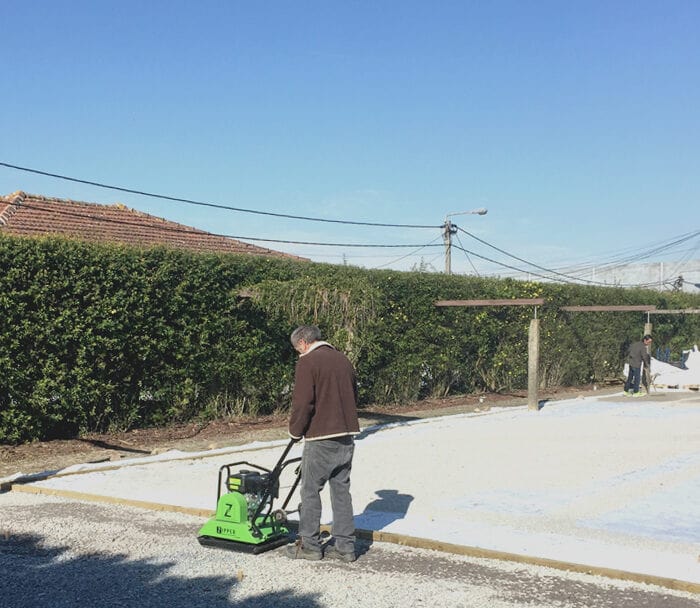
- After you compact the surface a couple of times, remove any remaining grooves or dents by raking or brushing the surface with a rigid broom. If necessary, you can compact the surface again.
- After you have compacted the main surface of the installation, you can finally compact the edges. The edges are best compacted tamping by hand, using either a mallet or a hand rammer.
- Clean any leftover materials from the edges. For a better result, clean the edges with a shovel before installing the artificial grass.
- The base materials should make a 90-degree angle. If there’s any leftover material, spread it all over the surface, compact it again or take it all out.
- Wet the entire surface so that any dust or dirt left doesn’t stain the grass in the next steps.
- You can leave the smaller areas and slopes for the end, adding a layer of decomposed granite to get the desired height. This thinner material base will help to fill grooves or any uneven areas left on the surface. Use a roller to compact the surface.
We’re one step away from completing the installation. Stay tuned to our next post where we’ll show you what steps to follow when installing your artificial grass. It will look great!

